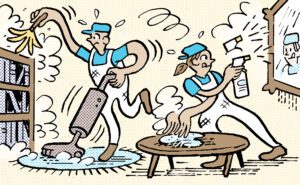 In an age of banner blindness, nearly every publisher has added a sponsored content offering. Meanwhile, programmatic native is replacing banners and boxes.
In an age of banner blindness, nearly every publisher has added a sponsored content offering. Meanwhile, programmatic native is replacing banners and boxes.
The programmatic native bucket, which includes Outbrain, TripleLift, Sharethrough, Taboola and Yahoo Gemini, features advertising in the form of article snippets, which look similar to sponsored content teasers.
Sponsored content, by contrast, is the ultimate in high-touch. Publishers create content on behalf of brands and distribute it – usually exclusively – on their web and social media sites.
But if publishers devote real estate to both snippets and sponsored content, do they risk cannibalizing the latter? How can publishers ensure those article snippets are actually relevant and valuable to readers?
The Globe and Mail, ALM Media and Trusted Media Brands shared their approaches to native advertising, from sponsored content to programmatic native.
Walled In Sponsored Content
Most publishers who do sponsored content and exclude other native formats aren’t trying to protect advertising revenue – they’re protecting subscription revenue.
Publishers whose content is good enough to make people pay for it also have enough cachet to build out exclusive native advertising programs. They include The New York Times, The Economist and the Canadian newspaper The Globe and Mail. (BuzzFeed, which took a strong sponsored content-only stand early, is a notable outlier because it doesn’t have a subscription business.)
“Because we have a hybrid commercial model with subscribers, we’ve historically been concerned about belly-fat ads,” said Andrew Saunders, CRO of The Globe and Mail, using the industry metaphor for low-quality ads. “We haven’t done [programmatic native] because we are sensitive to our subscribers.”
ALM Media, a subscription-oriented B2B publisher, also eschews ads linking to outside content because it doesn’t want to waste the time of its wealthy audience.
“There is a relationship between our brand and a reader paying hundreds or thousands of dollars a year that makes the paid subscription experience worthwhile,” said David Saabye, chief digital officer at ALM Media. “I can’t guarantee that with a programmatic solution in place.”
Consequently, publishers that have significant subscription business take extra care with how they approach sponsored content creation.
The Globe and Mail looks closely at metrics like click-through rates and engagement rates for its sponsored content, which Saunders said is above average based on metrics from Moat, Polar, Chartbeat and Omniture.
It’s also looking closely at performance. “We’ve pivoted our sales organization to be more marketing-focused and understand the true [brand] KPIs you need to measure against,” Saunders said.
The Open Native Approach
Focusing exclusively on publisher-created sponsored content isn’t a viable option for most publishers.
“In a perfect world, it would be all custom, and we would create and execute all of it,” said Rich Sutton, CRO of Trusted Media Brands, which includes Reader’s Digest, Family Handyman and Taste of Home. “But that’s analogous to saying I would like to sell all my ads direct with no programmatic.”
For those outside of that top dozen or so publishers, other forms of native make sense, Sutton said. That includes putting links to brand-created content that links out in the feed, content recommendation and more.
“You’ve made a commitment to native, which means you’re going to have native [advertising] positions on your site,” he said. “You can have that position collapse, or serve a paying message unit in there.”
Publishers are also opening up to allow more brand-created on their sites. While many publishers have brand studios that author content for brands, that’s likely to change as brands become better content creators.
ALM Media, for example, does not permit links to outside content, but its sponsored content advertisers already write their own content.
These pieces feel more natural than a white paper, have more permanence than a sponsored event and are quicker to execute, Saabye said.
ALM authors content itself, but mostly has companies supply it because they’re so good at it. “The point for us has been to make sure this is an article that’s worth reading, just like what the rest of the editorial staff produces,” Saabye said.
Cooking Up Some Contextual Relevance
Reader’s Digest tries to make its experiences as contextually relevant as possible.
For instance, it adds native ad opportunities to its Taste of Home recipes by putting branded ingredients in recipes: Replace the generic cream cheese in a recipe with, say, Kraft Philadelphia Cream Cheese. It’s also making its recipes shoppable, showing which ingredients are on sale at stores nearby.
The automation and scalability of these native placements feel “programmatic,” but they don’t detract from the value of Taste of Home. On the contrary, the publication is betting native adds to that value by making it easier for a reader to shop for ingredients for a recipe he wants to make.
Sutton is also bullish on future developments in programmatic native technology Using context and audience information will allow precise delivery of content that currently occurs only with bespoke content created for an individual site.
He’s using a new Taboola widget that serves ads by taking the person looking at the page as well as the content of the page into account. “What we see are native positions that make sense,” he said. “With just a bit of intelligence, programmatic native can make it.”













